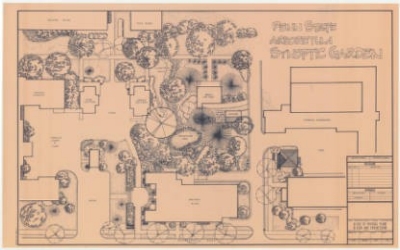Browse the Collection
Search the Collection
About the Collection
Arthur Edwin Bye, Jr., was born in Arnhem, the Netherlands, on August 15, 1919. He came to Pennsylvania at an early age when his father was a professor of art history at Swarthmore. Bye received a bachelor’s degree in landscape architecture from the Pennsylvania State University in 1942. As a Quaker, he was a conscientious objector during World War II and he spent the 1940s surveying properties in the Great Smoky Mountains. He preferred calling himself a gardener, instead of a landscape architect, in allegiance to the English tradition. One of his earliest projects was designing a woodland landscape for the Reisley home, designed by Frank Lloyd Wright in Pleasantville, NY. Bye published several books, most notably Art into Landscape, Landscape into Art, filled with photographs, many of his own works, framing landscaped views both natural and man-made that he thought successful. Bye died on November 25, 2001.
This collection of the papers of Arthur Edwin Bye, Jr. includes architectural drawings, articles, correspondence, plans, prints, brochures, invoices, contracts, reports, and photographs [102 cu. ft.]
Related Collections
- John Bracken Papers
- College of Arts and Architecture Records
- Jessie Smith Flory and William Bradford Flory Papers
- Gideon Golany Papers
- William Hajjar Architectural Drawings
Rights
Digital collections are available for research, teaching, and learning. These collections are not all part of the public domain even though they have been made publicly accessible. Moreover, even if a collection is in the public domain you should still cite where it came from and/or credit the author. For those collections under copyright protection, texts and images from the digital collections may not be used for any commercial purpose or beyond the normal “fair use” guidelines without prior permission from Penn State University and/or those parties who own the copyright. Where copyright is of concern in any material in question, that right is owned either by Penn State University, or by the original creators of the object, or their descendants. Therefore, when using any of this material, it is your responsibility, as the user, to secure permissions and adhere to the stated access policy, copyright laws, and educational fair-use guidelines.
For more information, please consult the Penn State University's Copyright Portal.
